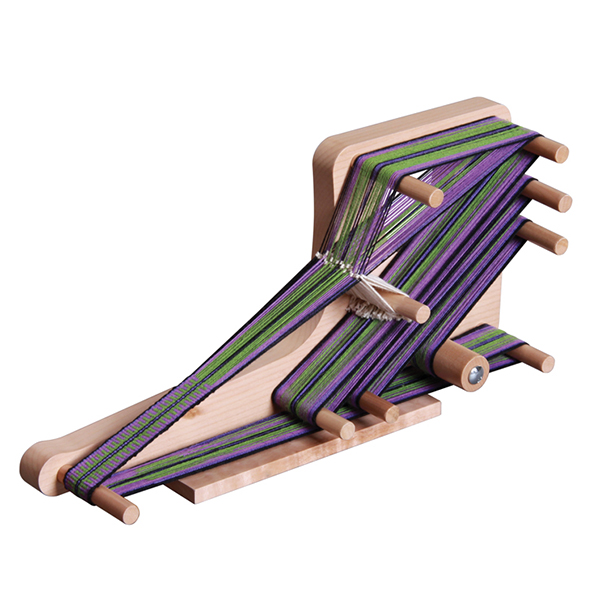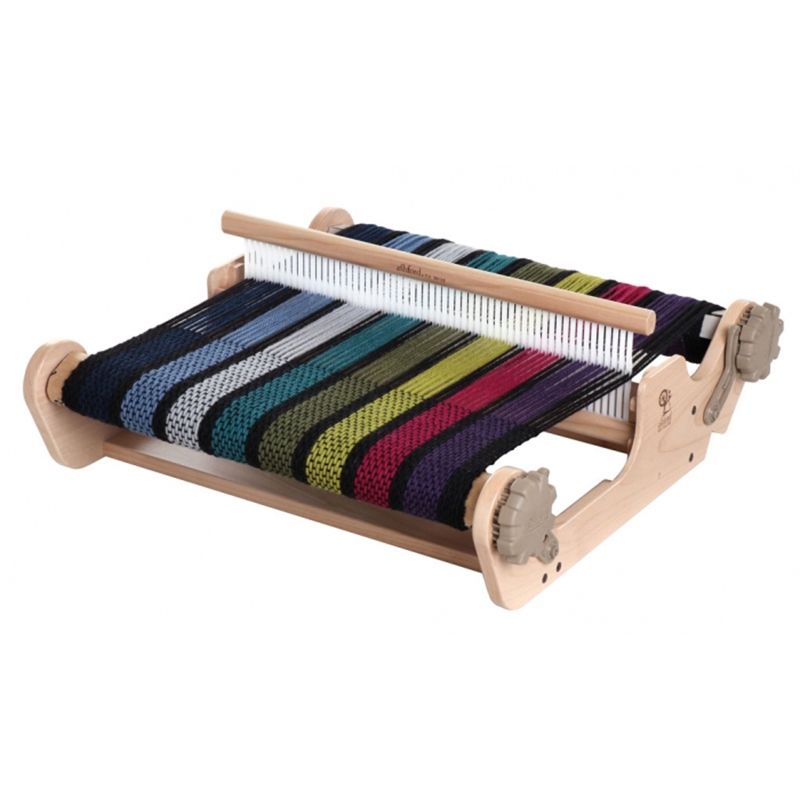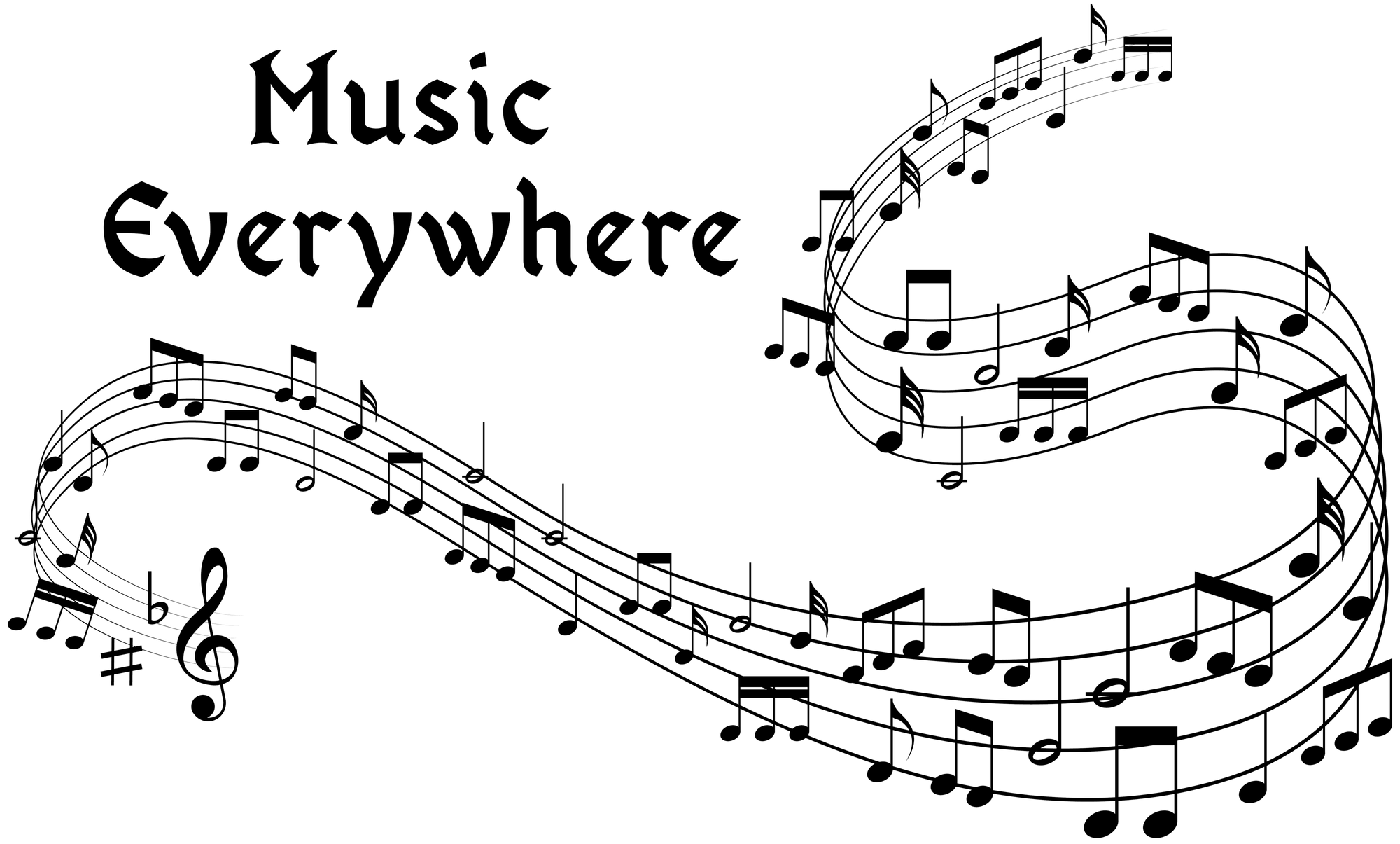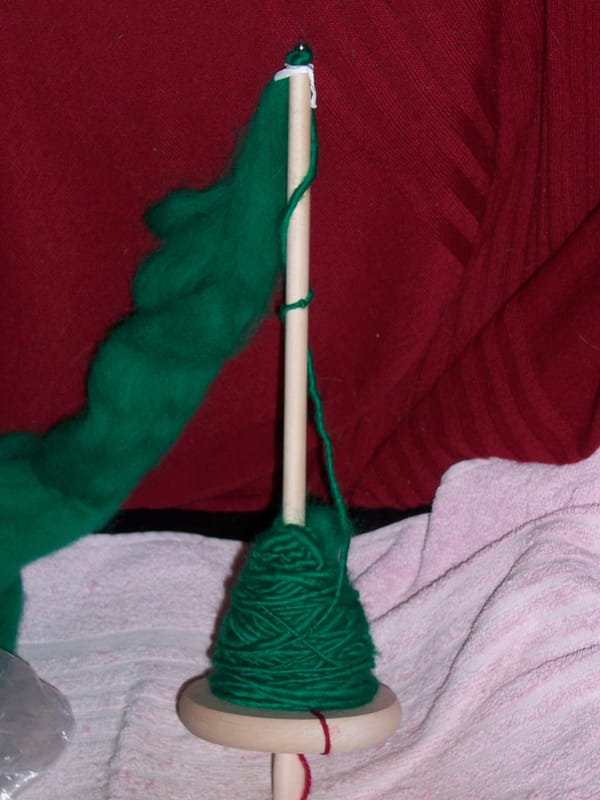Pastime with good company

I mentioned yesterday that the Milward loom, though it's going to be useful for many things, is not really what you want for ribbons and tapes. So I asked for recommendations on Mastodon, and someone suggested the rather Heath Robinson contraption in the photo, which is the Ashford Inklette loom. Doesn't look much like a loom, does it?
The Ashford Inklette is an inkle loom, which turns out to mean it weaves narrow bands; I always thought it referred to a particular weaving technique, but no. It has a larger sibling called the Ashford Inkle, and that will weave slightly wider and appreciably longer bands (the Inklette goes up to 1.8 m, which is pretty respectable for a lot of purposes, but its sibling will weave up to 2.8 m length, which will go right round the hem of a decent maxi skirt). I've seen a picture of the Inkle and there appears to be no significant difference other than the size; so I have ordered the Inklette, which is both cheaper and more portable, and then if it later turns out I really do need a bit more length and/or width, then I know I have the Inkle as an option.
Inkle looms vary considerably. This one produces a warp-faced band, rather like tablet weaving. If you want to do anything patterned, then warp-faced is excellent, because it makes it really easy to produce regular repeats. Some others will give you a more balanced weave, although the relationship between the thickness of the warp threads and how close together you can space them on the loom does affect that quite a lot. On the small loom I had as a child, I got the best results by using the thickest yarn I could persuade to go through the holes in the heddle (and if you're not sure what a heddle is, I'll come on to that in a moment). If your warp threads are too thin relative to the spacing between them, you'll get a weft-faced weave rather than a balanced one; you won't see the warp threads at all.

This is... actually, a really nice little loom. If I get into weaving in a big way, I may end up buying something similar. What the heddle does is it makes it easy to pass the shuttle between the warp threads. The warp threads go alternately through the central holes and the long slots alongside, which means the ones that go through the holes can't move up and down the heddle, whereas the ones that go through the slots can. So if you pull the heddle upwards, then the threads that go through the holes are above the ones that go through the slots, and if you push it downwards the opposite applies. This is what's called a rigid heddle, and it is the sort I had on my little loom as a child, but it is by no means the only sort. Some looms have several heddles to allow for different types of weave, and some even have a small heddle for every individual warp thread. A rigid heddle allows for only one type of weave (in this case a plain weave, but you could have a set of three which would allow you to do a twill weave); however, it does have the advantage that you can use it to flatten your newest weft thread against the edge of the cloth. If you're not using a rigid heddle, a comb is often used to do this.
So now I have (or, at any rate, shortly will have) the Milward loom for shorter, wider pieces of fabric like my diary pouch, and the Inklette for longer, narrower bands. And I thought, that's fine, that'll do to start with. Except...
Yesterday afternoon I went looking for square mesh netting for filet embroidery. Honestly, I might as well have gone on a unicorn hunt; well, very nearly, because you can technically get it, but you have to order it from Florida (so the delivery costs are going to be ridiculous), and even if you do that there isn't a lot of choice of sizes. It's basically whatever they have in at any time. I think they make it themselves. But then I discovered that I could get netting needles, and, not only that, but they were good ones; I used to have one of those, but it wasn't great. It was blue plastic and it was too thick to make very fine net; I think it was really intended to make things like string bags (and, indeed, I did make a string bag with it at one point). These ones are much better for making net for filet. So I ordered three in different sizes and then started looking round the rest of the site. Obviously I got some thread for making said net, but the trouble was, this site also had a section on weaving, and I just had to go and have a look, didn't I?
And that was how I ended up with Loom Number 3. Well, it was very cheap. It's actually a kit - build your own tiny box loom; it's about the size of a coffee mug and it has a fixed heddle. This also weaves narrow bands, so it's technically another inkle loom, but I think it's going to have a more balanced weave than the Inklette (won't know for sure till I try it out); however, apart from the very handy size, the thing it really has going for it is that you can weave pretty much any length you like. The end bar rotates so you can wrap your weaving round it as you go. This one's going to be especially good for trims; I don't think the results will be as strong as those of the Inklette, but for a trim that doesn't matter, whereas being able to weave to any length does.
Oh, and they haven't even arrived yet but they've all got names already. The one that started it all off is Millicent, the Inklette is Adelaide, and the super cute little box loom is Gisele. A splendid little company of looms; and if, as I suspect, I get heavily into this, I suspect there will be future additions. The thing is, there's no such thing as a universal loom. Different looms do different things well.
I have a feeling 2025 is going to be the Year of Weaving. Not that I'm going to be neglecting my other activities, of course!
This blog will now be going on hiatus until Monday 30 December. I would like to take this opportunity to wish all my readers a very happy and blessed Christmas, and a happy, peaceful, and prosperous New Year.




